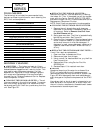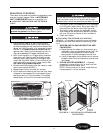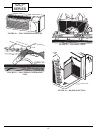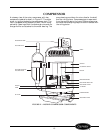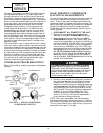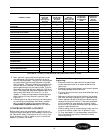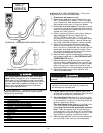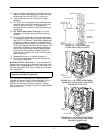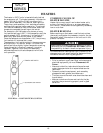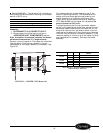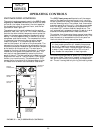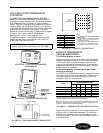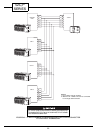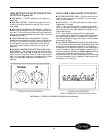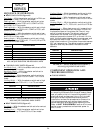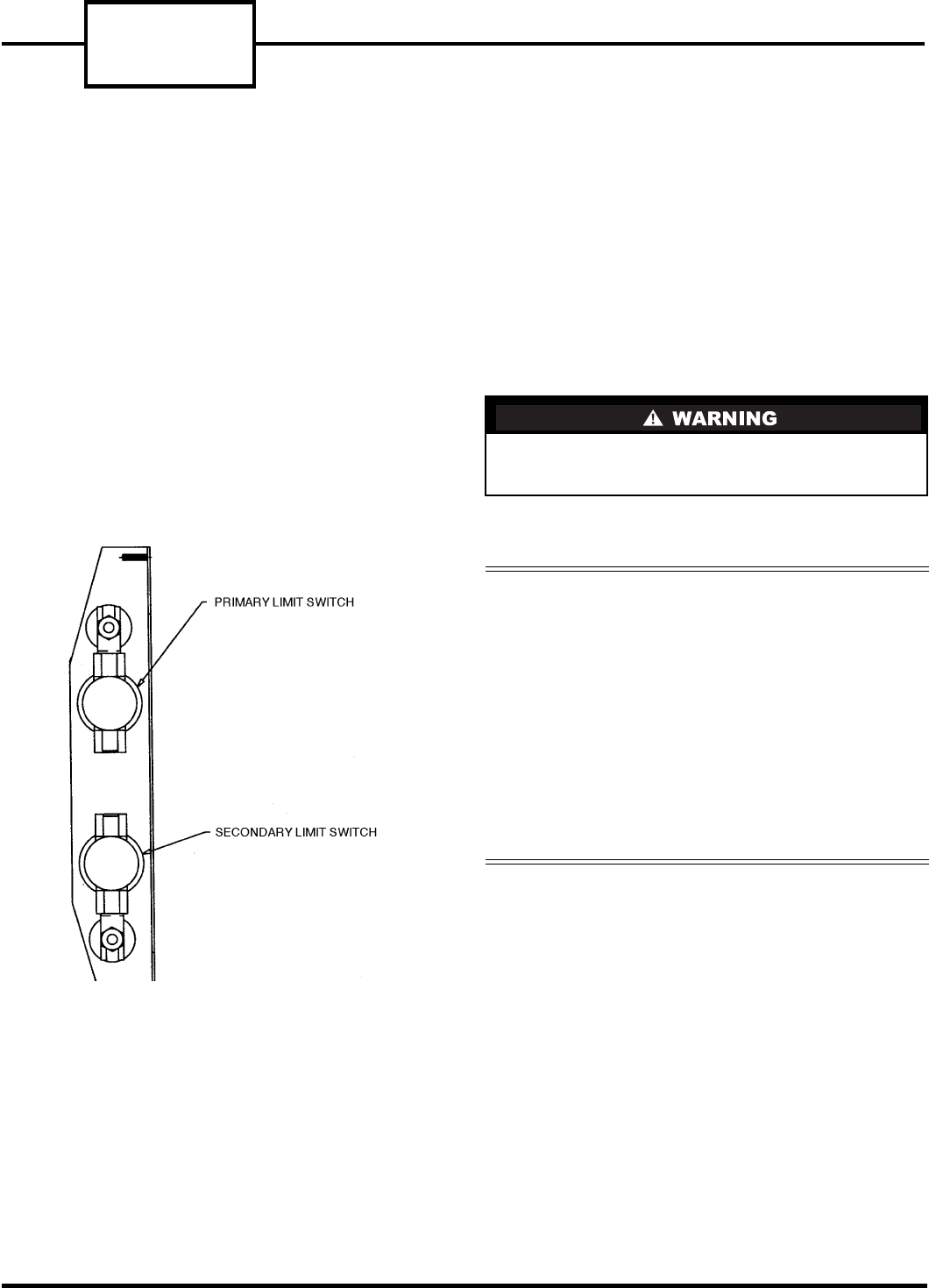
52C,P
SERIES
18
HEATERS
The heater in 52C,P units is located directly behind
the evaporator coil. The heater assembly includes the
heater (2.3 kW, 3.4 kW or 5 kW), a primary limit
switch, and a secondary limit switch. See Figure 34.
The primary and secondary limit switches are safety
switches that regulate heater operation. The primary
limit switch disables current to the heater when the
temperature exceeds the setting on the switch.
For example, a 3.4 kW heater may have a primary
limit switch setting of 150 F. If the temperature at the
switch exceeds 150 F, the primary limit switch will
electrically open and shut off power to the heater.
Once the temperature drops below 110 F, the primary
limit switch will automatically reset.
The secondary limit switch works in the same manner
as the primary limit switch, except it is a one time
switch and has a slightly higher temperature setting.
Once this switch is thermally opened, it must be
replaced. Together the primary and secondary
switches help maintain safe temperature limits for
unit operation.
COMMON CAUSES OF
HEATER FAILURE
Heater failure may result from broken heater coils,
primary limit switch failure, or an open secondary
limit switch. These conditions are generally caused by
low or no airflow.
HEATER REMOVAL
Before working on the heater, read the instructions
thoroughly and gather the necessary tools for the job.
Review all safety information on the unit and in the
product literature.
The manufacturer reserves the right to discontinue, or
change at any time, specifications or designs without
notice and without incurring obligations.
Before performing any cleaning, servicing, or main-
tenance to the unit, Disconnect All Power to avoid
the possibility of electric shock and personal injury.
Consider the following safety issues:
• Prior to performing any service or maintenance on
electrical equipment you must Disconnect All
Power.
• New and unfamiliar tasks should be performed
under the supervision of an experienced service
technician.
• Personal protective equipment, such as safety
glasses and work gloves, should be worn.
• The floor around the work area should be clean and
free of debris.
• Make sure tools are the correct tools for the job,
and that they are working properly and in good
condition.
FIGURE 34 — LIMIT SWITCH LOCATION



